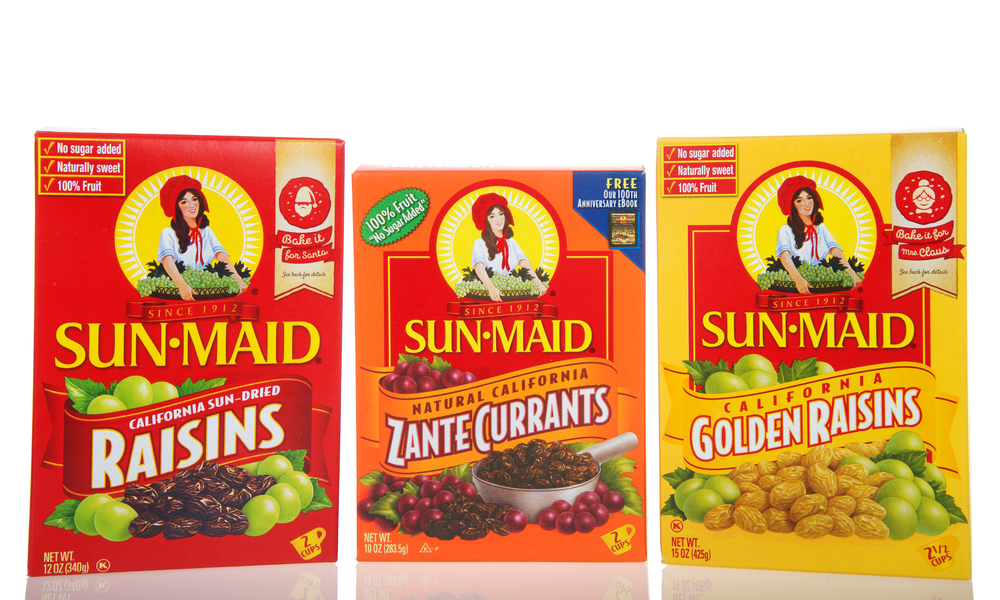Depending on your point of view, raisins are either a tasty lunchbox treat, or an evil catfish just waiting to lure you into taking a bite of what you thought was a lovely chocolate chip cookie. Love them or hate them, though, you’re probably fairly confident in what a raisin actually is. But what happens when we throw some similar dried fruits into the mix? Do you know the difference between raisins and their sultana sisters or currant cousins? Fear not: IFLScience is here to clear up any confusion.
Raisins vs sultanas
Believe it or not, raisins, sultanas, and currants are all different dried varieties of the same fruit: grapes. We’ll start with raisins and sultanas, probably the ones you’ll come across most often – currants have a few extra complexities that we’ll get to in a minute.
“Raisin” is really an all-purpose name for any dried grape. Because any grape variety can be used, there’s some variation in the color and flavor of raisins, but they’re always dried for about three weeks to produce a dark, sweet product with a soft texture.
According to Healthline, US raisins are generally made from Thompson seedless grapes, but there’s some international variation. In Australia, larger Muscat, Lexia, and Waltham Cross grape varieties are usually to thank/blame for the raisins in your cookie.
Sultanas, on the other hand, are only made from seedless green grapes. They can be treated with an oil solution to speed up the drying process, and they’re generally lighter in color than raisins.
Now, here’s another potential source of confusion. UK-based readers will be very familiar with sultanas, and you’ll typically find bags of them in the supermarket right next to the raisins. However, our friends across the Atlantic may not come across them as frequently, and that’s because sultanas in the US are often referred to as golden raisins. Which is actually much more descriptive and helpful, when you think about it.
What are currants?
That’s sultanas and raisins dealt with; what about those tricky little currants?
Currants are once again a type of dried grape. And again, readers in the UK will be very familiar with the sight of a big bag of the things, right next to the sultanas and raisins (aren’t we spoiled for choice?). There’s a huge variety of traditional UK recipes that call for currants, from the ever-festive mince pies to “squashed fly” biscuits (they’re real, we promise).
To produce a smaller, more intensely flavored dried end-product, small seedless grape varieties are chosen, such as the Black Corinth cultivar. Confusingly (but it’s about to get even worse, so buckle up), these grapes are often marketed in the US as “Champagne grapes”, despite the fact that they’re most definitely not used to make Champagne.
Currants are sometimes called Zante currants, referring to the fact that the trade in these grapes shifted to the Greek Ionian islands – notably Zante – in the early 1700s. This naming is also quite helpful for confirming that what you’re buying is in fact a dried grape, and not a dried version of one of several types of bush-grown fruits known as… you guessed it, currants.
We told you it was going to get confusing.
The genus of flowering plants Ribes can be divided into two broad groups: one produces gooseberries; the other produces currants, including blackcurrants and redcurrants.
While you may well be less likely to come across dried redcurrants or blackcurrants in your local grocery store, it’s not impossible, so it does pay to double check what fruit you’re buying if you pick up a package simply labeled “currants”.
If something is labeled Zante currants, you can rest assured that what you’re buying is, in fact, dried grapes. In places where “currant” is used by default to refer to dried grapes, you’ll probably find that dried black- or redcurrants, if available, are much more clearly labeled.

These packages from the USA make it very clear which variety you’re choosing.
Image credit: Sheila Fitzgerald/Shutterstock.com
So, there you have it. Raisins, sultanas, and currants are all different variations of the same thing: dried grapes. Currants can be a slightly trickier customer than the other two, but if in doubt most recipes will probably be just fine with whichever one you can easily get hold of.
But if you are getting stuck into some raisin-tastic holiday baking, just be aware that all fresh and dried grapes are toxic to dogs, and keep them well away from your furry friends. Raisins, sultanas, and currants – a treat (or trauma) reserved just for humans.
Source Link: Raisins Vs Sultanas Vs Currants – Do You Know The Difference?